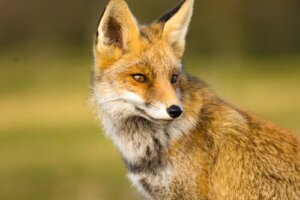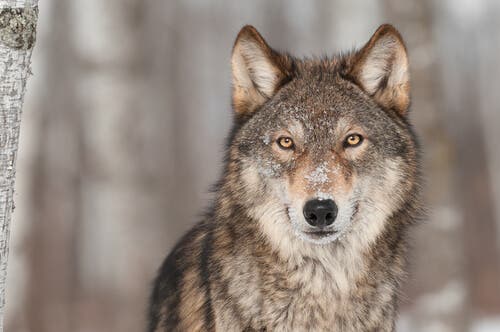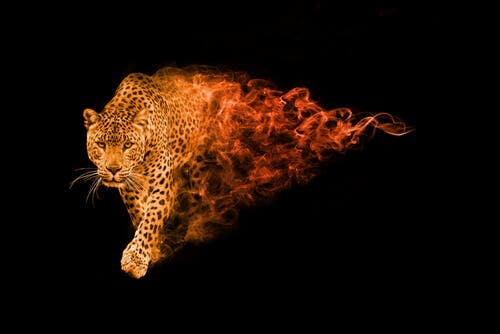Protecting Your Livestock from Predators


Written and verified by the lawyer Francisco María García
Professional farmers and beginners alike must make livestock safety a priority. In addition to being careful with their food, hygiene, and preventative medicine, it’s important to know about protecting your livestock from potential threats and predators.
Potential threats and security methods
When choosing to breed livestock, coexistence with wild species is a reality. Foxes and wolves are examples of natural predators of cattle or sheep.
Cattle farmers will also have to face possible attempts of theft, infestations, or epidemics. As well as illnesses from hygiene and poor preventive medicine. All of this shows us that we need effective methods to keep livestock safe and healthy.
However, it’s important to emphasize that such security measures need to be viable and sustainable. On the one hand, we can’t put the balance of the ecosystem at risk by hunting native animals.
On the other hand, the security system shouldn’t have to negatively impact the profits of the producer. Below, we’ll suggest some efficient alternatives for protecting your livestock.
Preference for native livestock breeds
When we talk about livestock safety, we almost immediately think of natural predators. However, problems like adapting to climate change and geography can also threaten livestock health. So, the simplest and most effective security measure is to choose native breeds.

This favors their adaptation, as well as them making the most of the natural resources available. In addition, these species tend to be better at protecting their offspring against predators.
Adequate preventive medicine for your cattle
Thinking that field animals ‘grow up on their own’ can be fatal. Although cattle are usually naturally resistant, they may be threatened by infections from internal and external parasites.
Diseases not only threaten the benefits of the livestock farmer, but also the health of the animals and meat-eaters.
Being very strict with regular vaccinations and deworming, as well as visits by a specialized vet is an excellent form of preventive medicine for your livestock. They also include a balanced diet, enhanced hydration, and possible antibiotic applications.
Protecting your livestock: Permanent surveillance
One indirect cause of livestock mortality is the lack of surveillance in the fields since poor control encourages predator invasions, potential theft, and isn’t effective in controlling the livestock’s health.
Another bad safety practice is disposing of birthing remains and dead animals incorrectly. This organic matter is perfect for pathogenic microorganisms and attracting predators.

This shows us that constant monitoring, day and night, is fundamental for keeping your livestock safe.
The importance of fencing and night-time stability
Night surveillance isn’t enough to protect your cattle after dark. They need to be kept in overnight shelters suitable for their size to keep them safe.
Additionally, fencing is a tradition in livestock farming, but isn’t always well enough made to prevent predator attacks. Many animals can climb over simple horizontal fences.
You need to get to know more modern techniques to improve your fencing, such as the Barbacana, which is a rope with pieces of hard-wearing fabrics and plastics in bright colors. Colors, reflections and movement confuse and scare natural predators.
Protecting your livestock: guard dogs
Traditionally speaking, using guard dogs is one of the best safety measures. Sheepdogs have always accompanied people in developing agricultural activity. Even today, they’re still faithful companions who demonstrate an endless will to work alongside farmers.
Above all, a guard dog should be trained and physically and emotionally prepared to protect itself and its territory. It’s also important to know how many dogs are needed according to the size of the land, the quantity of livestock, and the presence of predators.
Finally, it’s important to study new field defense techniques when learning about protecting your livestock.
Professional farmers and beginners alike must make livestock safety a priority. In addition to being careful with their food, hygiene, and preventative medicine, it’s important to know about protecting your livestock from potential threats and predators.
Potential threats and security methods
When choosing to breed livestock, coexistence with wild species is a reality. Foxes and wolves are examples of natural predators of cattle or sheep.
Cattle farmers will also have to face possible attempts of theft, infestations, or epidemics. As well as illnesses from hygiene and poor preventive medicine. All of this shows us that we need effective methods to keep livestock safe and healthy.
However, it’s important to emphasize that such security measures need to be viable and sustainable. On the one hand, we can’t put the balance of the ecosystem at risk by hunting native animals.
On the other hand, the security system shouldn’t have to negatively impact the profits of the producer. Below, we’ll suggest some efficient alternatives for protecting your livestock.
Preference for native livestock breeds
When we talk about livestock safety, we almost immediately think of natural predators. However, problems like adapting to climate change and geography can also threaten livestock health. So, the simplest and most effective security measure is to choose native breeds.

This favors their adaptation, as well as them making the most of the natural resources available. In addition, these species tend to be better at protecting their offspring against predators.
Adequate preventive medicine for your cattle
Thinking that field animals ‘grow up on their own’ can be fatal. Although cattle are usually naturally resistant, they may be threatened by infections from internal and external parasites.
Diseases not only threaten the benefits of the livestock farmer, but also the health of the animals and meat-eaters.
Being very strict with regular vaccinations and deworming, as well as visits by a specialized vet is an excellent form of preventive medicine for your livestock. They also include a balanced diet, enhanced hydration, and possible antibiotic applications.
Protecting your livestock: Permanent surveillance
One indirect cause of livestock mortality is the lack of surveillance in the fields since poor control encourages predator invasions, potential theft, and isn’t effective in controlling the livestock’s health.
Another bad safety practice is disposing of birthing remains and dead animals incorrectly. This organic matter is perfect for pathogenic microorganisms and attracting predators.

This shows us that constant monitoring, day and night, is fundamental for keeping your livestock safe.
The importance of fencing and night-time stability
Night surveillance isn’t enough to protect your cattle after dark. They need to be kept in overnight shelters suitable for their size to keep them safe.
Additionally, fencing is a tradition in livestock farming, but isn’t always well enough made to prevent predator attacks. Many animals can climb over simple horizontal fences.
You need to get to know more modern techniques to improve your fencing, such as the Barbacana, which is a rope with pieces of hard-wearing fabrics and plastics in bright colors. Colors, reflections and movement confuse and scare natural predators.
Protecting your livestock: guard dogs
Traditionally speaking, using guard dogs is one of the best safety measures. Sheepdogs have always accompanied people in developing agricultural activity. Even today, they’re still faithful companions who demonstrate an endless will to work alongside farmers.
Above all, a guard dog should be trained and physically and emotionally prepared to protect itself and its territory. It’s also important to know how many dogs are needed according to the size of the land, the quantity of livestock, and the presence of predators.
Finally, it’s important to study new field defense techniques when learning about protecting your livestock.
This text is provided for informational purposes only and does not replace consultation with a professional. If in doubt, consult your specialist.








